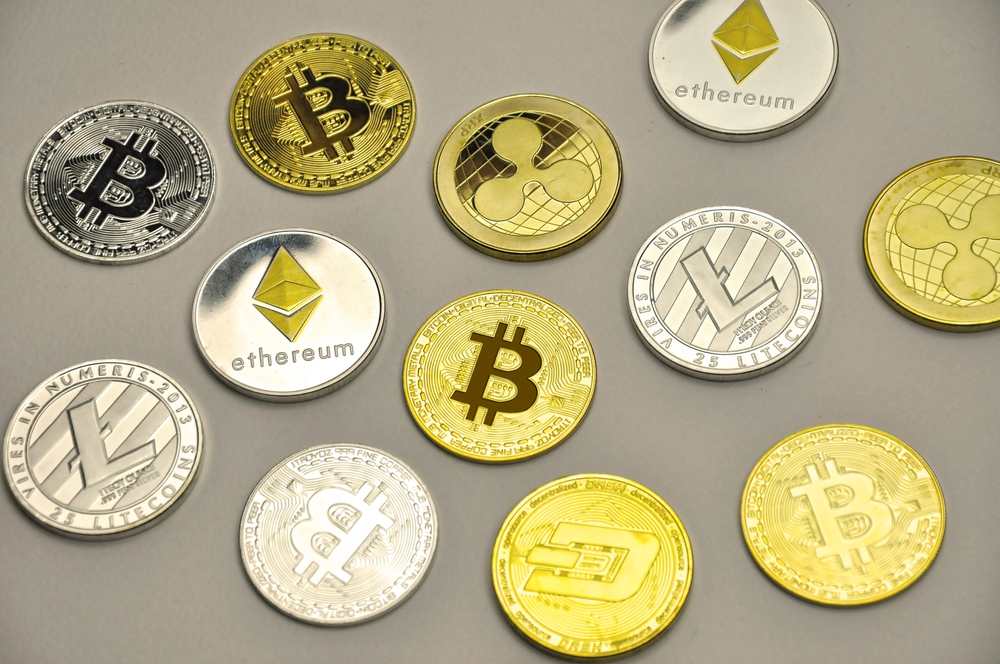Introduction
The cryptocurrency market can seem a scary place that is filled with technical terms and financial intricacies. Anyone who has traded cryptocurrencies or has been a part of the online crypto community is bound to hear the term spot trading.
Many times, investors can use this term without fully understanding its meaning. This article is going to provide a detailed account of what spot trading is and try to cover all related terms, such as spot price and spot date, etc.
What is Spot Market?
Before jumping to spot trading, it is best to learn about spot markets. A spot market is a place where investors can sell or purchase their intended cryptocurrencies instantly. The main reason that that term is named is the nature of instant or on-the-spot trading transactions taking place.
Spot markets are open to the public and everyone can participate in them to make immediate transactions. The buyers may purchase new cryptocurrencies for fiat or swap them with other cryptocurrencies.
The completion of a transaction is almost always instant, but it can vary depending on the size of the transaction, the traded products, and the trading platform. Spot markets are sometimes called cash markets because they are known for their ready liquidity.
Meanwhile, exchanges often act as third-party services that facilitate spot trading. Cryptocurrency investors have the option to perform spot trading on OTC or Over Counter Forums as well.
What is Spot Trading?
The concept of spot trading is deeply connected with spot markets. As the name suggests, spot trades are all about getting a fast response to the order generated. In most cases, investors are bound to benefit from the immediate execution of their spot trading orders.
Several terms are associated with Spot Trading. When investors are spot trading, they can use the spot price or the latest market value of a given asset, such as cryptocurrency. Spot traders try to make profits by trying to purchase a crypto asset for the lowest possible cost and selling it for the highest possible returns.
Spot traders can also make profits by shorting methods where they bid on increasing the prices of a cryptocurrency to purchase it later and make profits. Spot traders use spot markets to generate new market orders.
They can create new market orders on centralized exchanges, DEXs, and OTC markets. Spot traders aim to look for the best sell or purchase prices that maximize their profits based on their trading positions.
However, spot traders have to deal with the danger of changing prices as they are executing a given market order.
The reason for the sudden change in the spot price can be related to the limitation of available liquidity on the exchange or insufficient volume. There are instances where a spot trader offered 10 Bitcoins at a spot price X, but the trade allowed them only 4 Bitcoins.
Thus, the trader has to get the remaining 6 Bitcoins at a different spot price. It is important to keep in mind that spot prices change in real-time, and their value is affected by every new market order.
However, the dynamics of spot trading on OTC platforms are different than the DEXs and CEXs. Most spot trades can take place immediately, but bigger orders can take up to T+2 days. T+2 days stands for the trading date and two or more business days. Spot trading for Forex and securities can take more time.
However, cryptocurrency trades are usually settled between two or more days. Meanwhile, OTC trade duration for spot transactions varies since they take place on a Peer-to-Peer scale.
How does Spot Trading Work?
As mentioned above, spot trading starts with the creation of a new market order. The buyers that are spot trading add bid prices or purchase prices for their cryptocurrency reserves. On the other hand, the sellers who are spot trading generate market orders by offering an Ask or sell price.
The idea is that sellers ensure that their bid prices are the highest possible while the buyers ensure that their ask price is the lowest possible for long positions. Bid is a term used to denote the highest possible purchase price, while Ask is a term used to indicate the lowest price a seller is willing to pay to the buyer.
The order book or the market order thus tries to keep up with both bid and ask prices and match buyers and sellers as soon as possible to make instant trades possible. For example, when Mr. ABC creates a new purchase order or ASK order, his order is instantly made visible to the bid side or seller side and vice versa.
The orders that are indicated in green belong to Ask or purchase transactions, while orders in red are used to represent the seller of the same transaction. The same transaction can carry on and shift to the ask side when Mr. ABC opts to sell the cryptocurrencies, he has purchased in the same bid order earlier.
Spot Trading on different Trading Platforms
The dynamics of spot trading can change when the trade is taking place on different trading platforms. There are three types of trading platforms where spot trading can take place, and they are mentioned as under:
Centralized Exchanges
Centralized exchanges are crypto trading forums that are regulated and operate under the supervision of their local government regulators. Centralized exchanges are bound to offer more trading options in addition to cryptocurrencies, such as forex, commodities, etc.
These exchanges are also known as CEX, and they work as an intermediary between the buyers and sellers in addition to providing custodial services for the cryptocurrencies. The sign-up process for CEX is more complicated and can require official verification and passing the KYC and AML requirements.
Investors can purchase or sell cryptocurrencies in exchange for fiat currency returns on CEXs. Centralized exchanges facilitate the buyers and sellers for performing spot trades; therefore, they charge a fee for services for every transaction, new listing, and other trading activity.
Therefore, exchanges remain in profit regardless of bull or bear markets. The profitability of an exchange depends on maintaining the highest possible trading volume and active trading accounts.
Spot trading on a CEX is subject to slippage on account of the change in liquidity, trading volume, or big trade orders for small-cap currencies.
Decentralized Exchanges
Decentralized exchanges are based on blockchain technology, and they are not affiliated with any government agency or regulator. The investors can start operating on DEXs without going through the hassle of creating an account or signing up.
DEX match bid and ask orders using smart contracts and allows the investors to perform trades directly from their digital wallets. The transactions on DEXs are automated and only carried out if the conditions on both sides are matched. Some users suffer from the lack of KYC and AML verification.
Some DEXs have built-in order books, such as Binance DEX. Meanwhile, there are an increasing number of AMM or Automated Market Markers based DEXs such as PancakeSwap.
AMMs are also automated, but they operate like liquidity pools and allow investors to swap one cryptocurrency for other variants. Spot trading on DEXs is also subjected to slippage, much like centralized cryptocurrency exchanges.
OTC Markets
OTC stands for Over-The-Counter Markets. These markets are the platforms or trading channels that exist outside of the exchange realm. In most cases, OTC trades take place independently between one trader and the other.
In some cases, brokers can perform OTC trades on behalf of their clients. OTC trades require messaging apps, bank wires, trading contracts, etc. OTC trades are useful on account of the complete elimination of order books.
These trades are not subject to slippages like DEX or CEX. When an investor is making an OTC trade, they can expect to complete the entire transaction without worrying about slippage. Slippage happens when a trader is unable to complete their trade order on account of sudden price changes that render their transaction incomplete.
Spot traders who wish to carry out small-cap crypto trades without dealing with the threat of low liquidity and slippage can use the OTC trading option.
How to do Spot Trading?
Now that all the important terminologies related to spot trading have been explained, it is time to explore how anyone can start spot trading. Three main components of spot trading can also be viewed as steps of a complete spot trade cycle. Here is the detailed description for the benefit of the investors:
Spot Price
The spot price is said to be the current price or the latest market value of a given cryptocurrency. The spot prices, however, can differ by a small margin when a trader moves from one trading platform to another. Since centralized and decentralized exchanges have a decided amount of liquidity available on them, the prices of a given cryptocurrency can differ based on the current liquidity available within them.
However, OTC markets do not have to deal with the issue of liquidity on one exchange platform, and therefore the spot prices for OTC trades are more stable and shielded from the danger of slippage.
Market Order
Creating a market order is essential for every spot trade transaction. The sellers must add the best possible bid prices, while the buyers must offer a suitable ask price to make the spot trade happen.
Order books are available on both centralized and decentralized exchanges where investors can generate new orders by putting their desired sales or purchase prices. Meanwhile, when investors are dealing in the OTC space, they must also draft a bid and ask price to perform a spot trade.
Trade Date
Trade Date is the day when a spot trade is initiated, and the transaction has been officially recorded. This is also the day when spot traders have started the process of carrying out the spot transaction.
For CEX and DEX, the trade date can be marked the instant when the order book has been matched between a buyer and a seller. However, for OTC trades, the investors can tick the trade date when they have reached a spot trade agreement or signed a spot trade order.
Settlement Date
The settlement date is the time record when one spot trade cycle is completed. It signifies that the intended sales and purchase of a given cryptocurrency has been carried out and the traders have earned the profits they intended with no outstanding obligations remaining on both parties.
The distance between trade and settlement dates is usually smaller for DEXs and CEXs since they are fully automated.
On the other hand, the OTC trade and settlement date is often bigger since it manually takes place, but it can be speedy if the brokers are using digital modes of transactions such as bank wires and online contract verification applications.
Differences Between Futures and Spot Markets
There is a considerable difference between spot markets and futures markets. The spot trades take place in the fastest possible manner.
On the other hand, the futures, by definition, aim to carry out a possible trade in the futures based on the predicted price between the buyer and the sellers. Futures entail traders settling the trade using cash exchanges rather than cryptocurrencies or other assets.
Therefore, Futures are known as a way to gain exposure in cryptocurrency without directly buying or selling them. On the other hand, spot traders have multiple options available at their disposal for the return of their transaction, such as cryptocurrencies, forex, or even commodities.
Spot trades often do not require extensive conditions about the sales or purchase of a given cryptocurrency. Meanwhile, futures traders try to define their market orders explicitly in case to avoid any legal loopholes.
Advantages of Spot Trading
Transparency
Spot trades are transparent because they are based on the latest market prices, and there is little room for a scam. Spot prices are based on the supply and demand forces in the market, and it does not have to require extensive verification like margin trading or futures trading.
When investors are carrying out spot trades, they can make profits based on simple arithmetic. On the contrary, other types of trade, such as working with derivatives or leveraged positions, can require the investors to get familiar with technical indicators and fundamental analysis.
Easy Terms
The terms and conditions of a spot trade are straightforward. The investors are expecting to get a response based on the latest price of a given cryptocurrency. There is no need to read the complicated trading jargon or get into specialized trade law etc.
Meanwhile, other trades, such as margin and futures trading, can require the investors to make sense of a complex and scrupulous trade contract to avoid any issues.
Automated
Thanks to the current technology, spot trades on exchanges have become fully automated. Investors can avoid suffering from losses by setting an automated order with a predetermined price threshold to dissolve the position. These automated orders can also work as an alternative for Stop-loss orders.
The OTC trades may also get the same effect by adding new clauses in their spot trade agreements. The same luxury is not available for futures and margin traders.
Limitations of Spot Trading
Here are some of the noteworthy drawbacks of spot trading:
Asset Management
When investors are swapping their assets using spot trading, they can get stuck with relatively undervalued cryptocurrencies. On the other hand, the investors may be promoted to ensure the secure storage of their cryptocurrency assets.
The futures investors do not have to worry about keeping their cryptocurrency reserves secure at all times. Investors who wish to make spot trades cannot take out their assets off the exchange and move them to non-custodial platforms frequently on account of transaction charges.
Lack of Stability
For most enterprise users, stability is a defining tenet for their survival.
Therefore, they cannot depend on spot market trades to make profits as it depends on the frequent market volatility.
Conservative Profits
Investors can make a considerable profit using spot trading. However, in most cases, the revenue collected from spot trading is dwarfed in comparison to futures and margin trading results. Investors who are taking the risk of leveraged positions can increase their profits several folds on account of the multiplication of their investment equity by several folds.
Conclusion
In most cases, investors adopt the Dollar-cost-averaging method to take advantage of the spot trading option. The Long position holders can make profits during the bull market, while the short position holders can make a bank when the market has entered into the bearish lap.
There are options for investors to convert the exploits of their spot market trades to convert in stablecoins or fiat currencies, depending on their preferences.










